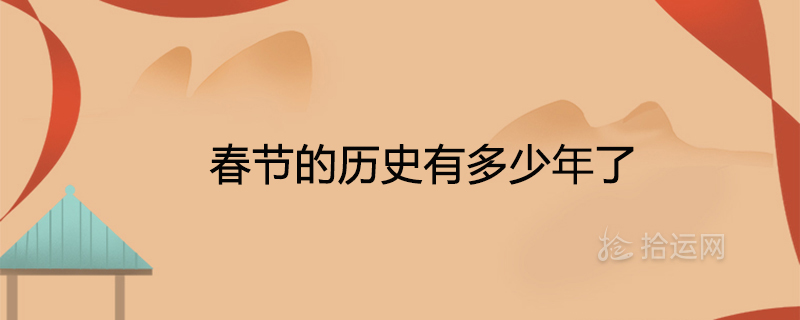How old is the history of the Spring Festival and when did it originate?
The Spring Festival evolved from the New Year’s Day, but it was actually named after the 1911 Revolution, that is, in 1913, with a history of only more than 100 years.However, it originated in ancient times, and it first appeared because of people’s sacrifice to the gods of heaven and earth.

The origin of the Spring Festival
The origin of ancient traditional festivals is related to ancient primitive beliefs, sacrificial culture, as well as human and natural cultural contents such as astronomical phenomena and calendars.According to the research results of modern anthropology and archaeology, there are two most primitive beliefs of human beings:one is the belief in heaven and earth, and the other is the belief in ancestors.Most of the ancient traditional festivals were formed when the ancients chose a day to offer sacrifices to thank the gods of heaven and earth and the kindness of ancestors.The Spring Festival is evolved from the prayers for the year at the beginning of the year.In ancient times, people held sacrificial activities at the beginning of the new year after the end of the one-year-old (year) farming and prayed for the blessings of the gods and ancestors.
The historical development process of the Spring Festival
Ancient times:from the beginning of the year, the epoch method was adopted, that is, the epoch method of stems and branches.The simplified Heavenly Stems and Earthly Branches, the ten Heavenly Stems are:A, B, C, Ding, Wu, Ji, Geng, Xin, Ren, Gui, and the twelve Earthly Branches are:Zi, Chou, Yin, Mao, Chen, Si, Wu, Wei , Shen, You, Xu, Hai.The ten heavenly stems and the twelve earthly branches are matched in turn, forming a sixty-cycle epoch method.(The Sheti Era, today is called the Ganzhi Calendar; it is classified as the Gregorian Calendar, also known as the Chinese Gregorian Calendar).
Xia, Shang and Zhou:The Xia Dynasty used January as the first month in spring, the Shang Dynasty used December as the first month in winter, and the Zhou Dynasty used November as the first month in winter.(Lunar calendar)
After Qin Shihuang unified the six kingdoms, it was stipulated that October in winter would be the first month.(Lunar calendar)
The Qin calendar (Zuanxu calendar) was used in the early Han Dynasty.In the first year of Emperor Wu of the Han Dynasty, that is, in 104 BC, astronomers Tang Du, Luoxiahong, Deng Ping and others formulated the "Taichu Calendar" (also known as the "Eighty-one Divided Law Calendar"), and absorbed the solar terms of the Ganzhi Calendar.The ingredients are used as a supplement to the calendar to guide farming, and the original start of the year from October 1 in winter to January 1 in spring is restored.
After the Han Dynasty, several emperors had changed the calendar and the beginning of the year.After Wang Mang usurped the Han Dynasty, he stipulated that the beginning of the year was the beginning of the lunar new year, which was Yin Zheng.Cao Rui, Emperor Wei Ming, was also changed to Yin Zheng for a time.After Wu Zetian proclaimed emperor, he changed the country name to "Zhou" and adopted Zhou Zheng.Since then, successive dynasties have switched to Xiazheng, with the first day of January as the beginning of the year.
Through generations of development, later generations gradually perfected the Chinese calendar on the basis of the early calendar.Since then, China has been using the Chinese calendar until now.After 1970, "Xia Li" was renamed "Lunar Calendar" (lunar calendar, also known as yin and yang calendar)).
After the Revolution of 1911, the Gregorian calendar (a type of solar calendar, also known as the Gregorian calendar) was gradually used.Later, in order to distinguish the two New Years from the Chinese calendar and the Gregorian calendar, since the first day of the first month of the summer calendar is just before and after the "Li Chun" solar term, one of the twenty-four specific seasons that represent seasonal changes in the Ganzhi calendar, the first day of the first month of the first month of the Chinese calendar (lunar calendar) was used.It was renamed "Spring Festival", and the 1st month of the Gregorian calendar was renamed "New Year’s Day".
In July 1913 (the second year of the Republic of China), Yuan Shikai approved the first day of the first lunar month as the Spring Festival, and agreed that the Spring Festival would be a regular holiday, which began in 1914.Since then, the beginning of the Lunar New Year has been changed from the previous "New Year" to "Spring Festival".

微信扫码关注
更新实时通知
